Memory Scaling on Haswell CPU, IGP and dGPU: DDR3-1333 to DDR3-3000 Tested with G.Skill
by Ian Cutress on September 26, 2013 4:00 PM ESTAs mentioned previously, real world testing is where users should be feeling the benefits of spending up to 13x on memory, rather than a synthetic test. A synthetic test exacerbates a specific type of loading to get peak results in terms of memory read/write and latency timings, most of which are not indicative of the pseudo random nature of real-world workloads (opening email, applying logic). There are several situations which might fall under the typical scrutiny of a real world loading, such as video conversion/video editing. It is at this point we consider if the CPU caches are too small and the system is relying on frequent memory accesses because the CPU cannot be fed with enough data. It is these circumstances where memory speed is important, and it is all down to how the video converter is programmed rather than just a carte blanche on all video converters benefitting from memory. As we will see in the IGP Compute section of this review, anything that can leverage the IGP cores can be a ripe candidate for increased memory speed.
Our tests in the CPU Real World section come from our motherboard reviews in order to emulate potential scenarios that a user may encounter.
USB 3.0 Copy Test with MaxCPU
We transfer a set size of files from the 120GB OCZ Vertex3 connected via SATA 6 Gbps on the motherboard to the 240 GB OCZ Vertex3 SSD with a SATA 6 Gbps to USB 3.0 converter via USB 3.0 using DiskBench, which monitors the time taken to transfer. The files transferred are a 9.2 GB set of 7539 files across 1011 folders – 95% of these files are small typical website files, and the rest (90% of the size) are precompiled installers. In an update to pre-Z87 testing, we also run MaxCPU to load up one of the threads during the test which improves general performance up to 15% by causing all the internal pathways to run at full speed.
Results are represented as seconds taken to complete the copy test, where lower is better.
The difference between the slowest and the fastest is around 2%, or 1 second in our test, making the memory have little influence over intended USB speed (at load).
WinRAR 4.2
With 64-bit WinRAR, we compress the set of files used in the motherboard review USB speed tests. WinRAR x64 3.93 attempts to use multithreading when possible, and provides as a good test for when a system has variable threaded load. WinRAR 4.2 does this a lot better! If a system has multiple speeds to invoke at different loading, the switching between those speeds will determine how well the system will do.
Up first, WinRAR 3.93, with results expressed in terms of seconds to compress. Lower is better.
Using the older version of WinRAR shows a 31% advantage moving from 1333 C9 to 3000 C12, although 2400 C9/2666 C10/2800 C11 have a good showing.
WinRAR 4.2 results next:
We see similar results with the later version of WinRAR – here having at least 1866 MHz memory gets above the grade in terms of time, lower CAS Latency helping (1866 C8 / 2133 C9 / 2400 C9 / 2666 C11)
FastStone Image Viewer 4.2
FastStone Image Viewer is a free piece of software I have been using for quite a few years now. It allows quick viewing of flat images, as well as resizing, changing color depth, adding simple text or simple filters. It also has a bulk image conversion tool, which we use here. The software currently operates only in single-thread mode, which should change in later versions of the software. For this test, we convert a series of 170 files, of various resolutions, dimensions and types (of a total size of 163MB), all to the .gif format of 640x480 dimensions. Results shown are in seconds, lower is better.
FastStone is purely a CPU limited benchmark, with little variation and no trend in the results. Discrepancies are part of the statistical variation expected with any result.
Xilisoft Video Converter 7
With XVC, users can convert any type of normal video to any compatible format for smartphones, tablets and other devices. By default, it uses all available threads on the system, and in the presence of appropriate graphics cards, can utilize CUDA for NVIDIA GPUs as well as AMD WinAPP for AMD GPUs. For this test, we use a set of 33 HD videos, each lasting 30 seconds, and convert them from 1080p to an iPod H.264 video format using just the CPU. The time taken to convert these videos gives us our result in seconds, where lower is better.
Similar to WinRAR, to avoid the ultra-slow speeds, anything above 1866 MHz seems to be the right way to go here.
Video Conversion - x264 HD Benchmark
The x264 HD Benchmark uses a common HD encoding tool to process an HD MPEG2 source at 1280x720 at 3963 Kbps. This test represents a standardized result which can be compared across other reviews, and is dependent on both CPU power and memory speed. The benchmark performs a 2-pass encode, and the results shown are the average frame rate of each pass performed four times. Higher is better this time around.
The higher frequency memory performs the best, but to get at least 5% speed up, DDR3-1866 comes along again.
For whatever reason the 1333 C9 and 3000 C12 get a bad showing, but it seems as long as we avoid 1333 C9, any speed is reasonable for a 5-6% increase.
TrueCrypt v7.1a AES
One of Anand’s common CPU benchmarks is TrueCrypt, a tool designed to encrypt data on a hard-drive using a variety of algorithms. We take the program and run the benchmark mode using the fastest AES encryption protocol over a 1GB slice, calculating the speed in GB/s. Higher is better.
Similar to FastStone, there is nothing to differentiate the results. The only oddball here is technically our slowest memory speed: 1333 C9.


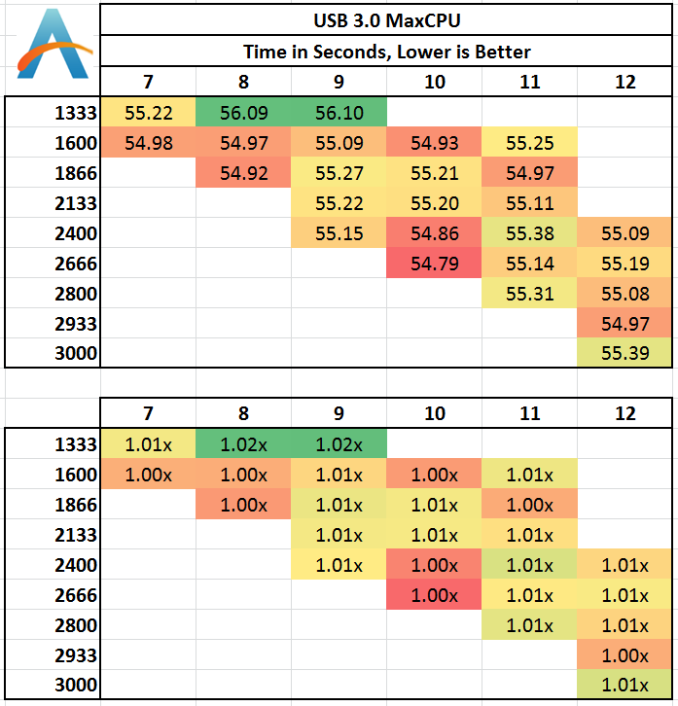

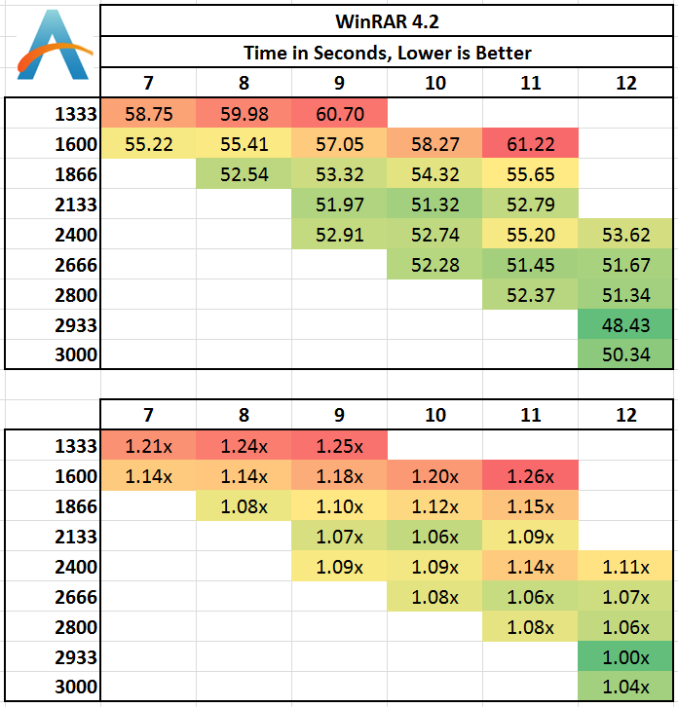
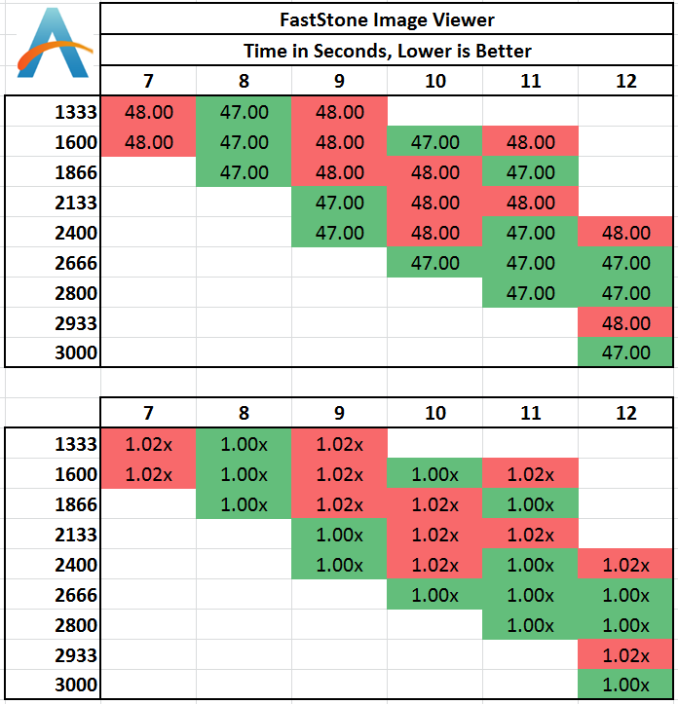
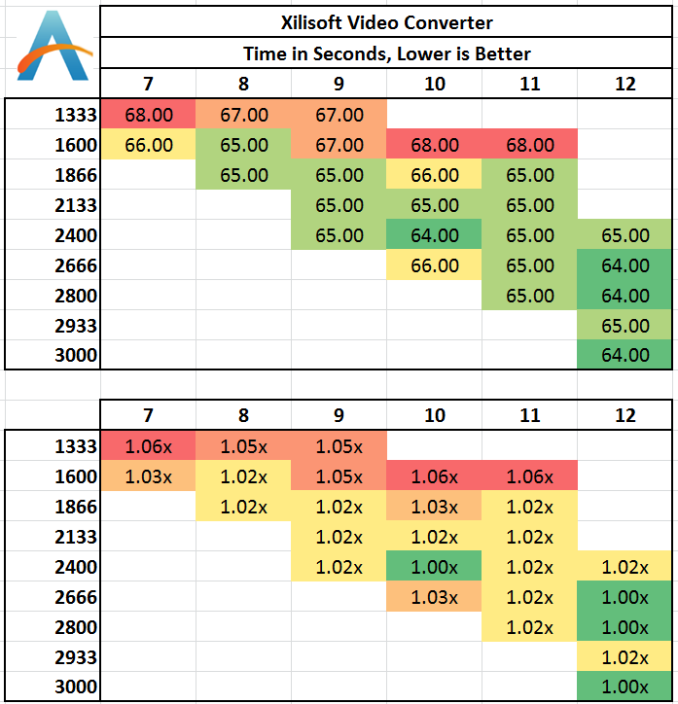
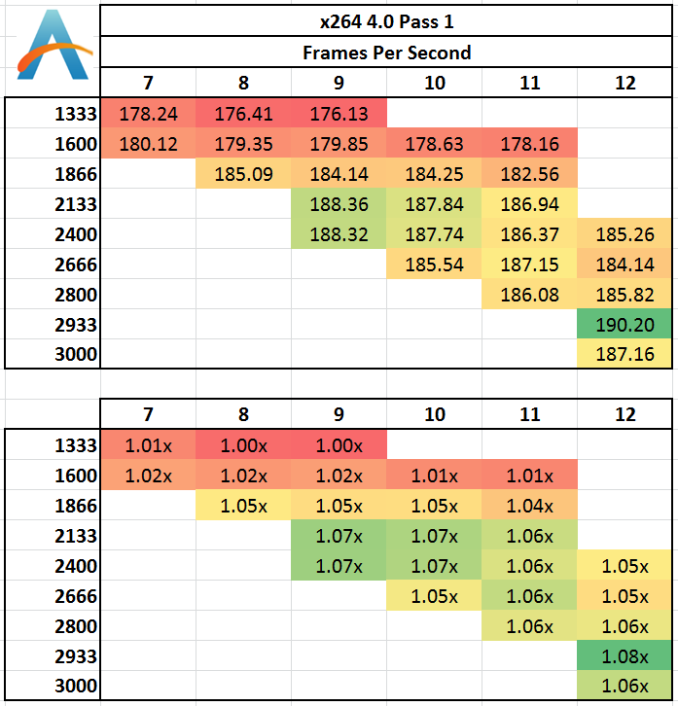
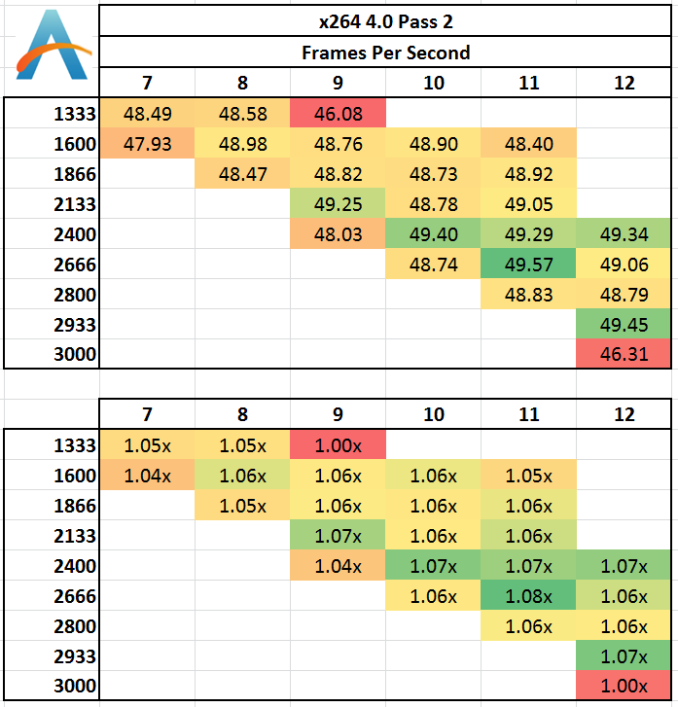
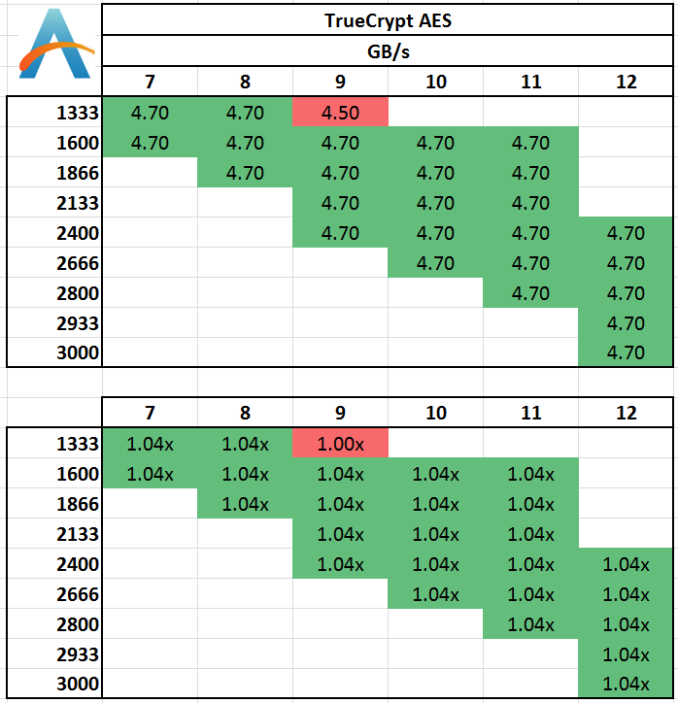








89 Comments
View All Comments
Nagorak - Thursday, September 26, 2013 - link
Why did memory prices fluctuate so much since the end of last year and now? The Hynix fire looks to have next to no impact, but the price of memory has nearly doubled since last November/December.aryonoco - Thursday, September 26, 2013 - link
Ian, I do not want to disparage your work, please take this as nothing but constructive criticism. You do amazing work and the wealth of technical expertise is very clear in your articles.But you have a terrible writing style. There are so many sentences in your articles that while technically grammatically correct, are the most awkward ways of saying what you mean. Take a very simple sentence: "In terms of real world usage, on our Haswell platform, there are some recommendations to be made." There are so many ways, much simpler, much cleaner, much shorter to say what you said in that sentence.
I really struggle with your writing style. I know journalism isn't really your day job and you have a lot of important things to attend to, but please, if you care about this side job of yours as a technical writer, being technical is only half the story. Please consider improving your writing style to make it more readable.
Bob Todd - Friday, September 27, 2013 - link
I'd wager most of the readers didn't struggle as mightily as you. If you want to critique another's wordsmithery, you might want to find a classier way to do it. Our first exhibit will be sentence one of paragraph two. Surely you could have strung together a couple of words that got your point across without sounding like an ass?Impulses - Friday, September 27, 2013 - link
Yeah, I'm pretty sure that starting a sentence with a But is something you'd typically avoid...Dustin Sklavos - Friday, September 27, 2013 - link
"You have a terrible writing style."Constructive!
How would you like it if someone came to your place of business and told you "Look, I don't mean to disparage your work, but it makes my cat's hair fall out in clumps."
ingwe - Friday, September 27, 2013 - link
Yep. This definitely wasn't constructive.Ian, I don't see anything wrong with your writing, and I would rather you concentrate on getting articles out than on spending lots of extra time on editing your work.
jaded1592 - Sunday, September 29, 2013 - link
Your first sentence is grammatically incorrect. Stones and glass houses...Sivar - Thursday, September 26, 2013 - link
What a great article. Tons of actual data, and the numerous charts weren't stupidly saved as JPG. I love Anandtech.soccerballtux - Thursday, September 26, 2013 - link
so bandwidth starved apps with predictable data requests (h264 p1) really like it but when the CPU has enough data to crunch (winrar) the lower real-world latency time in seconds is worth having.gandergray - Thursday, September 26, 2013 - link
Ian: Thank you for the excellent article. You provide in depth and thorough analysis. Your article will undoubtedly serve as a frequently referenced guide.